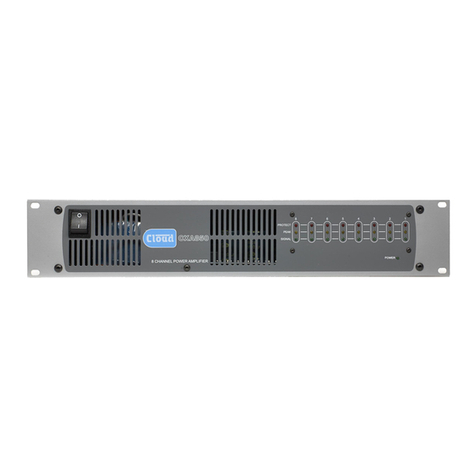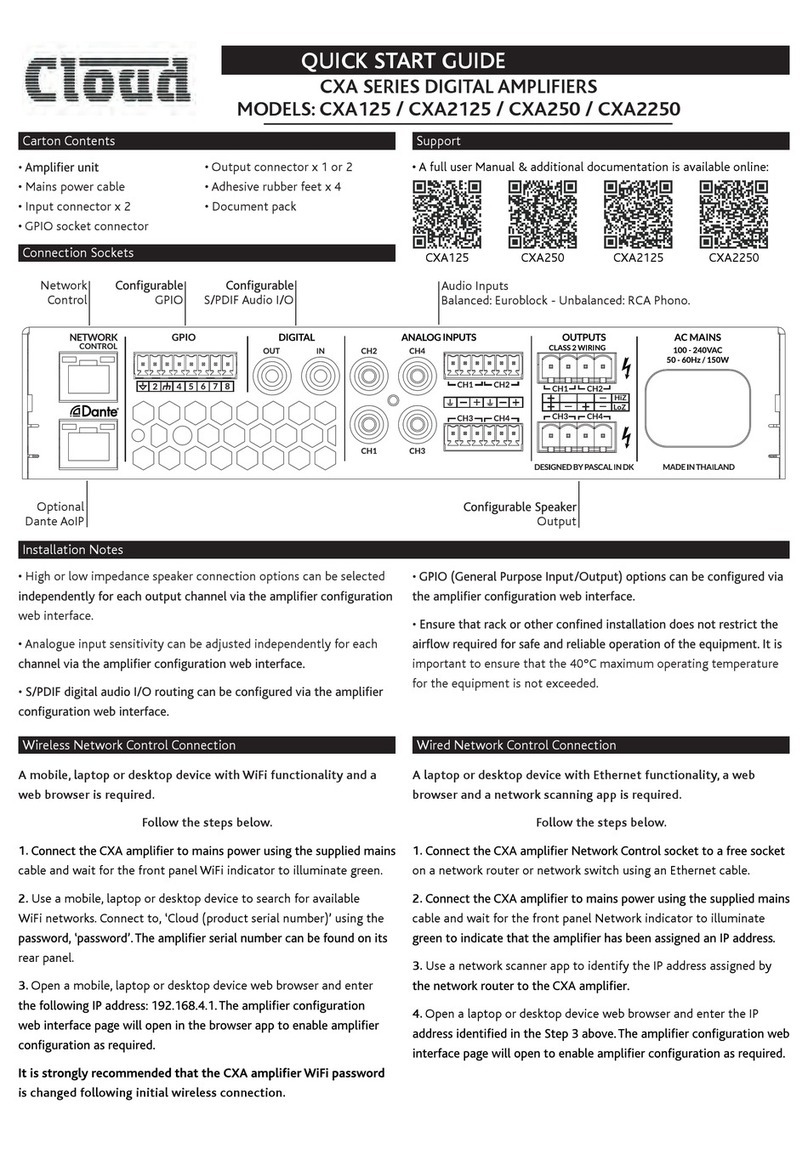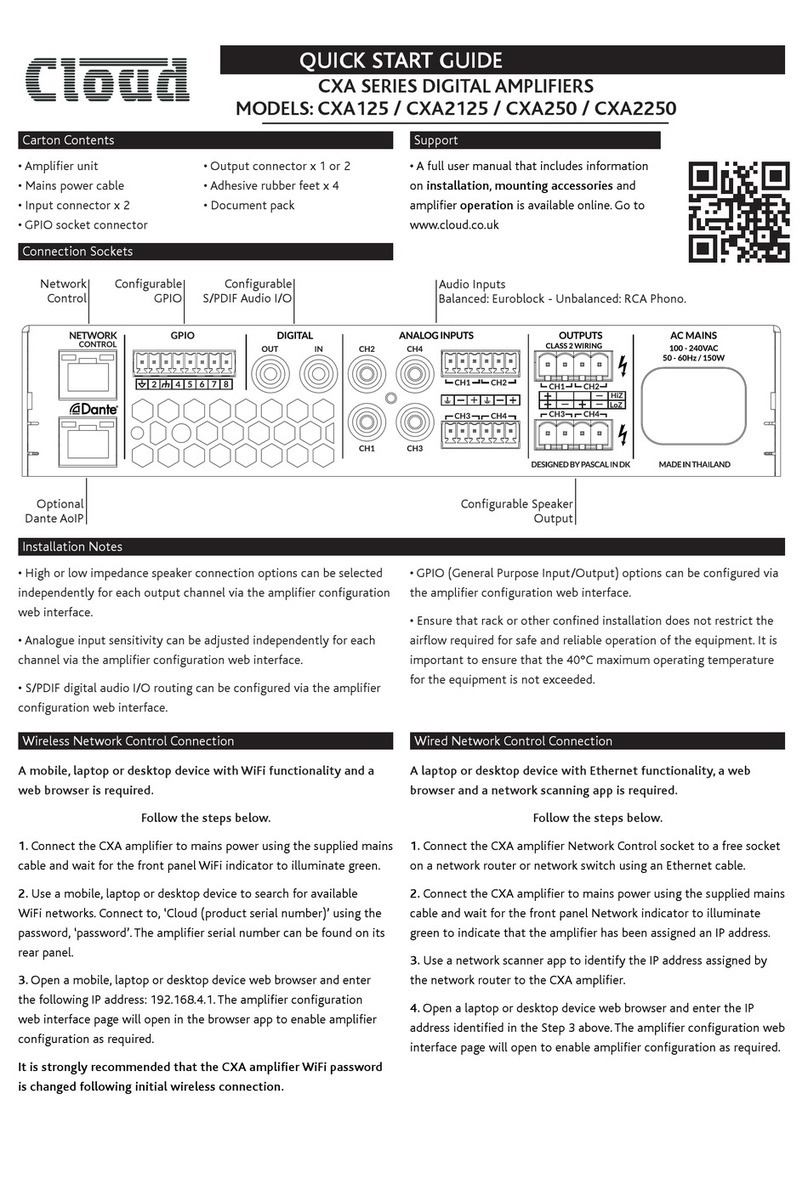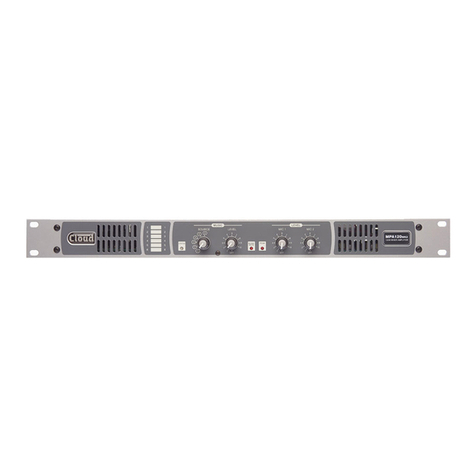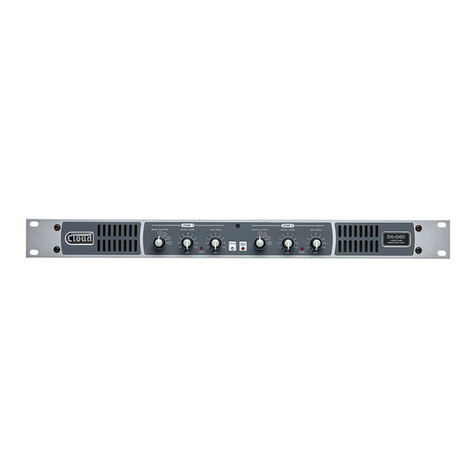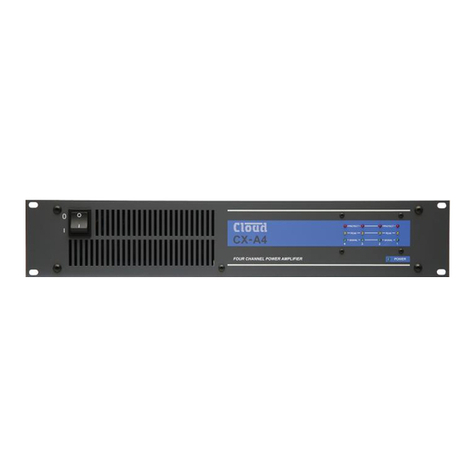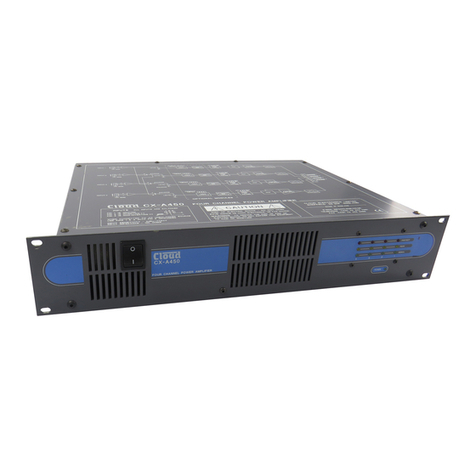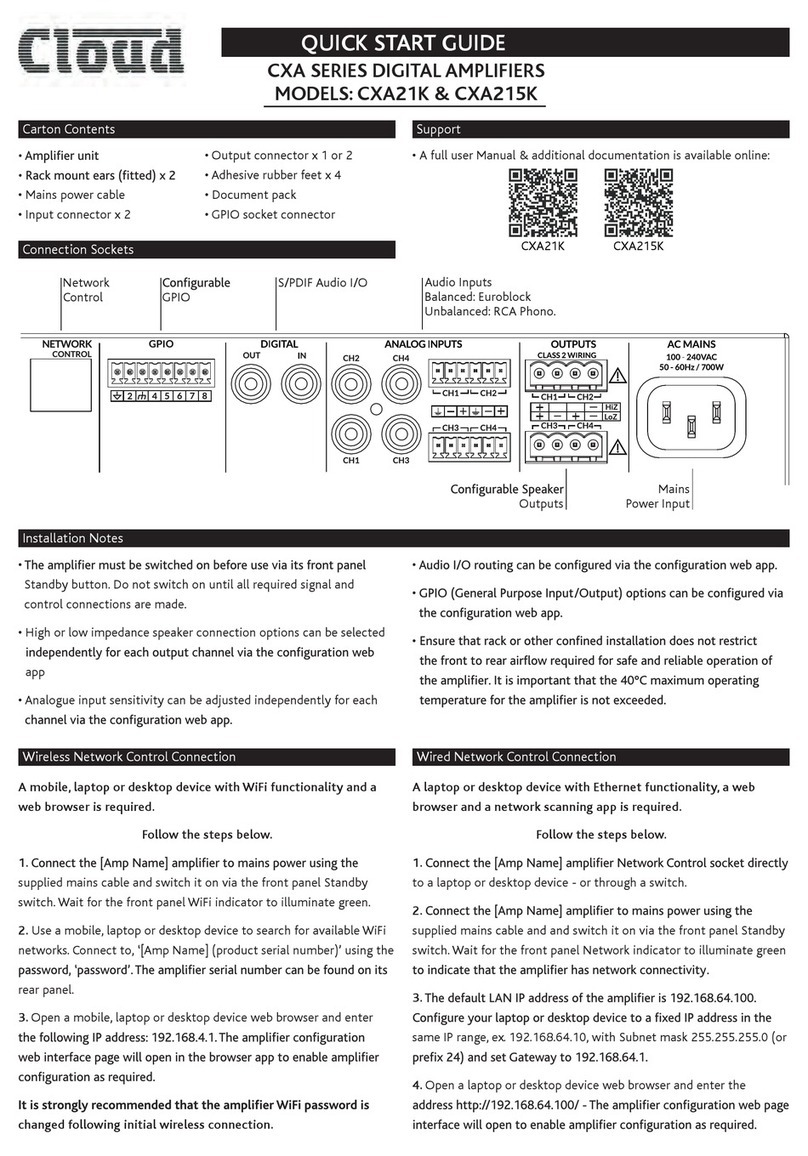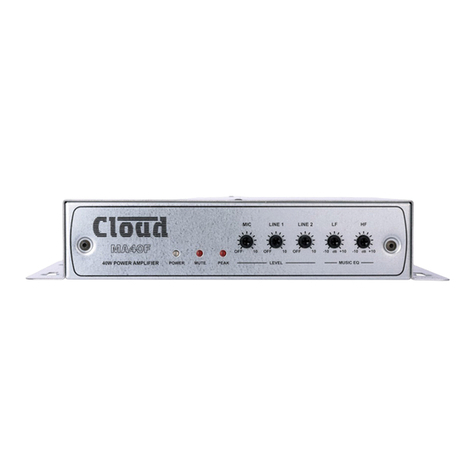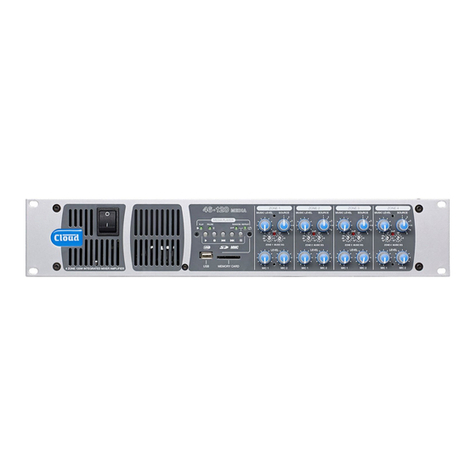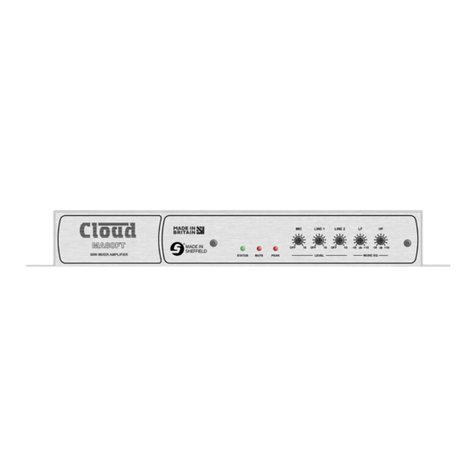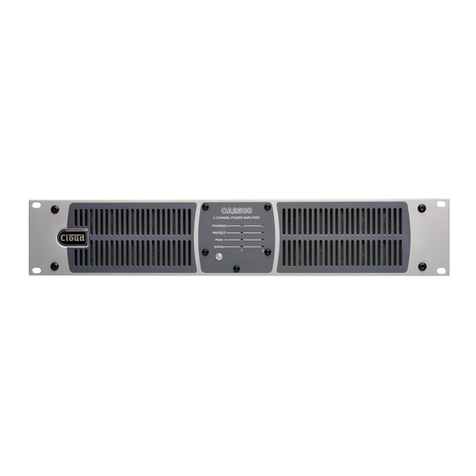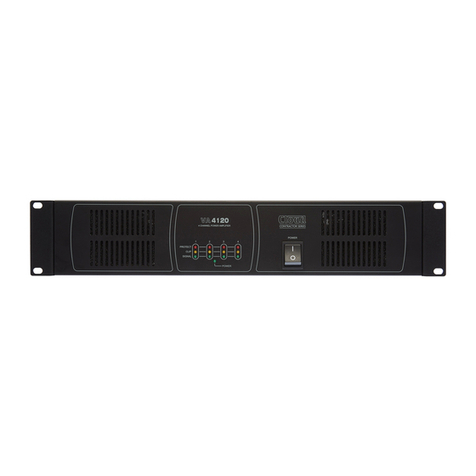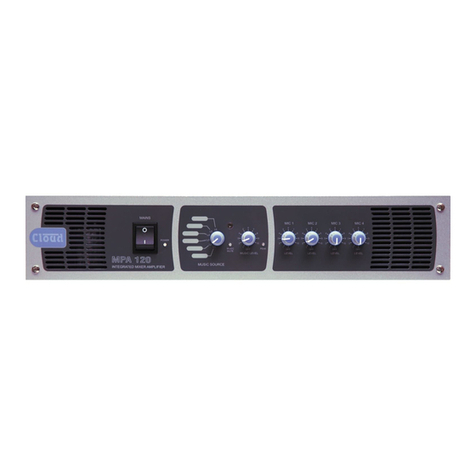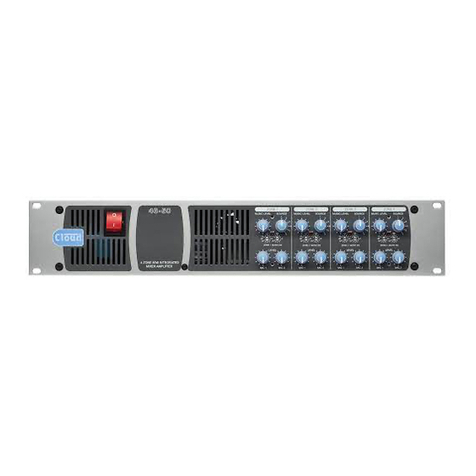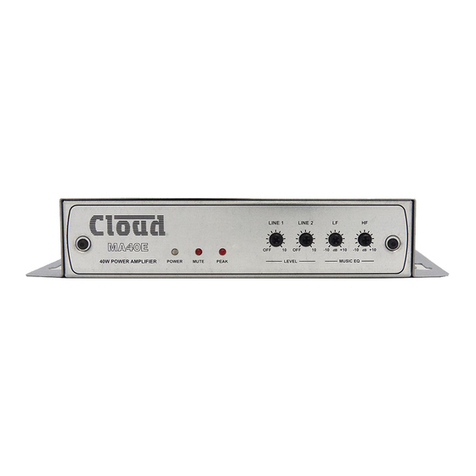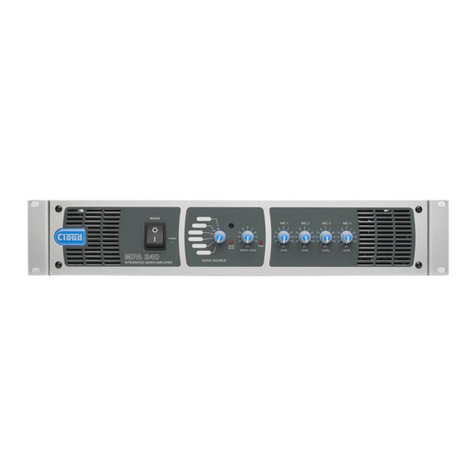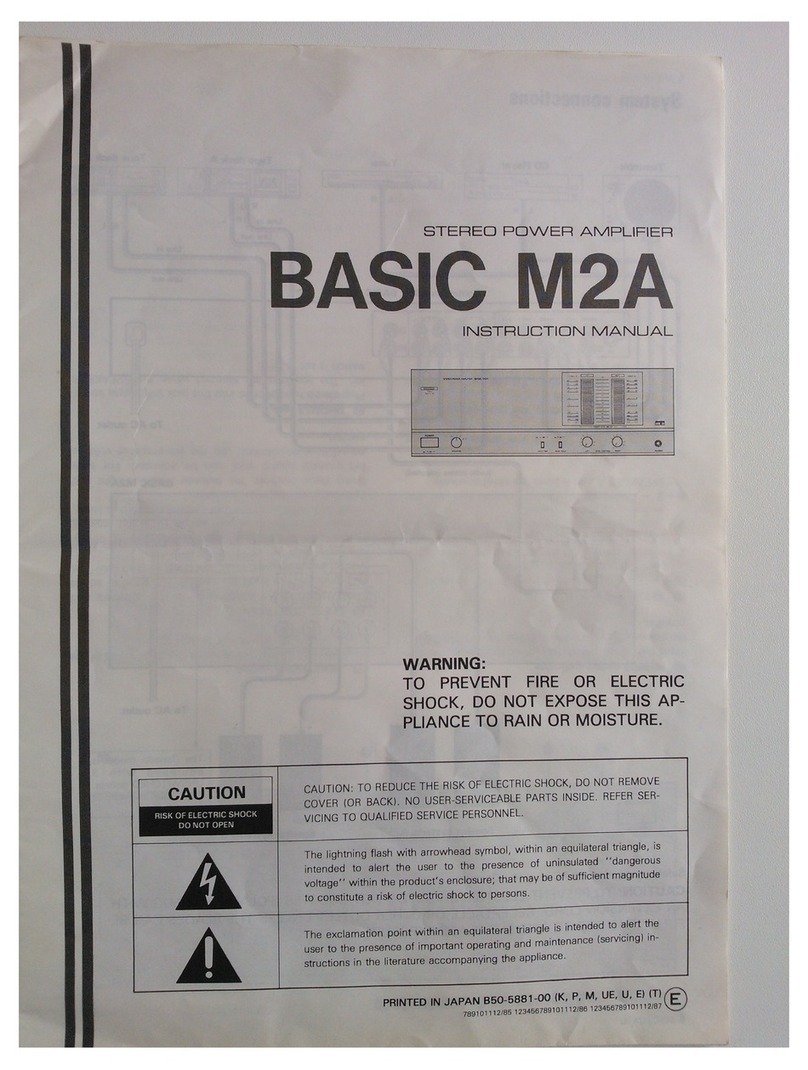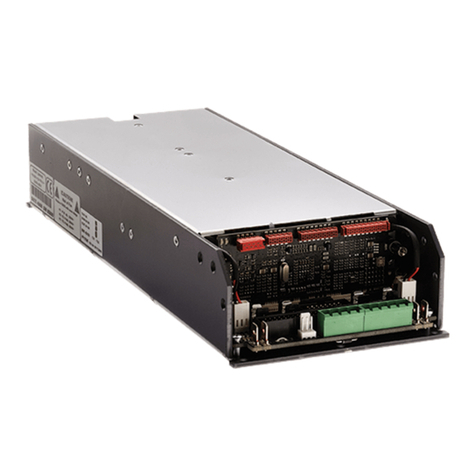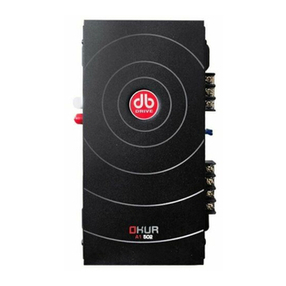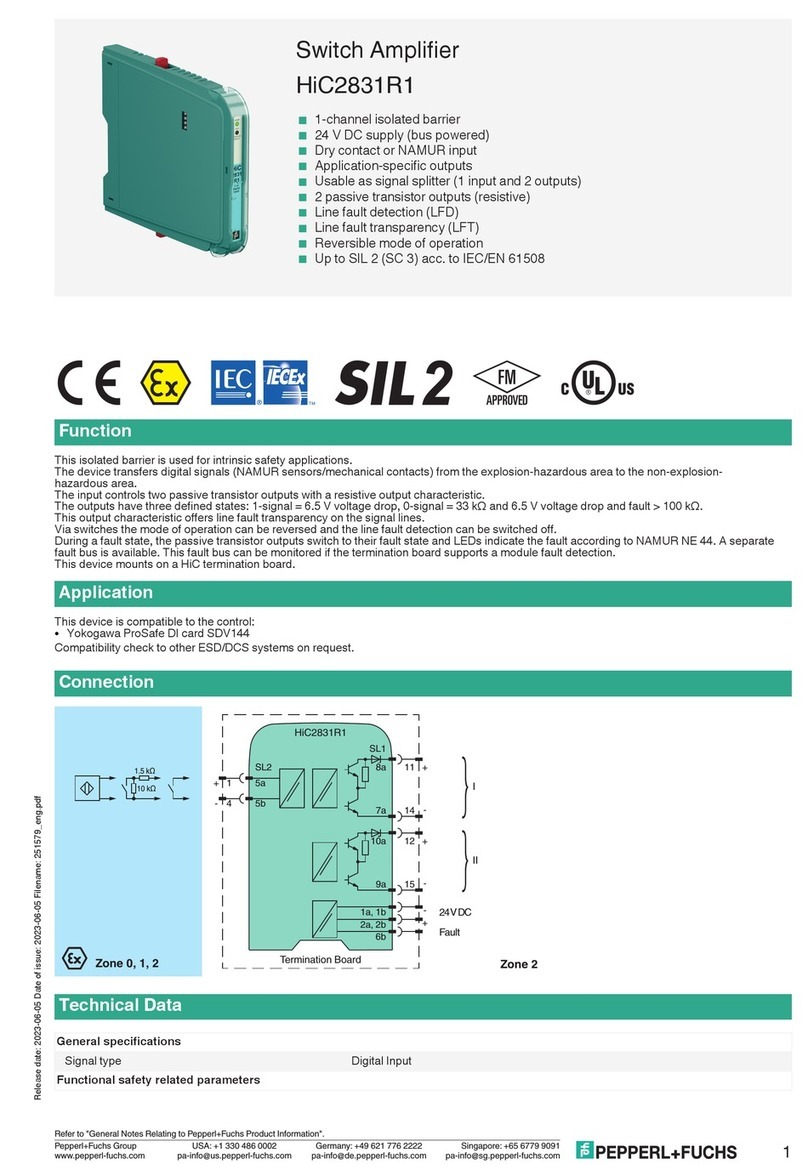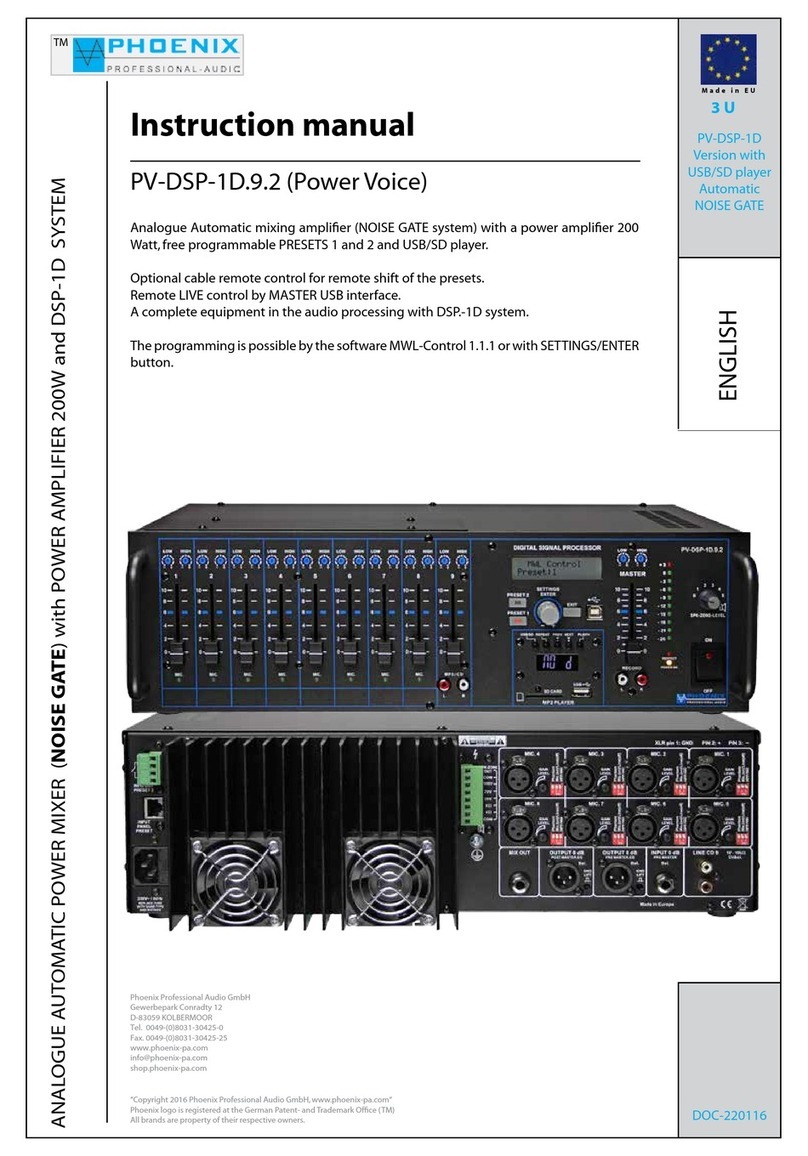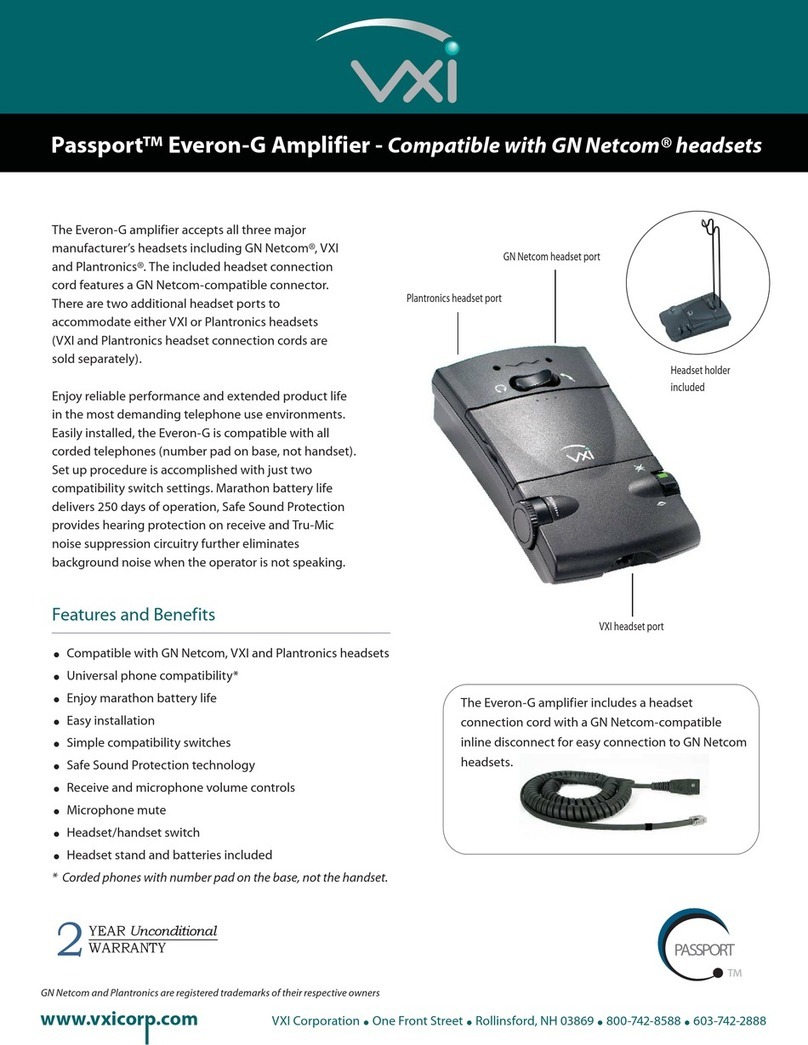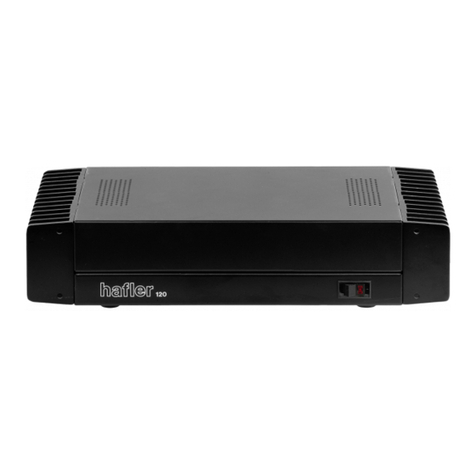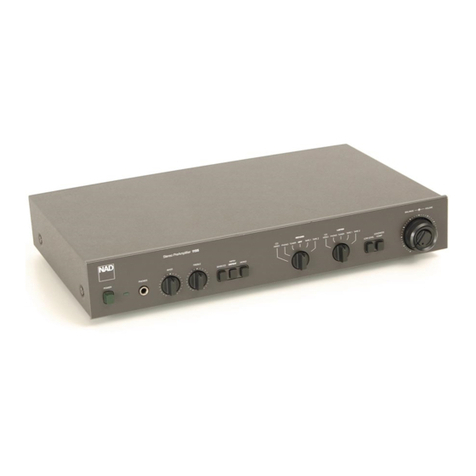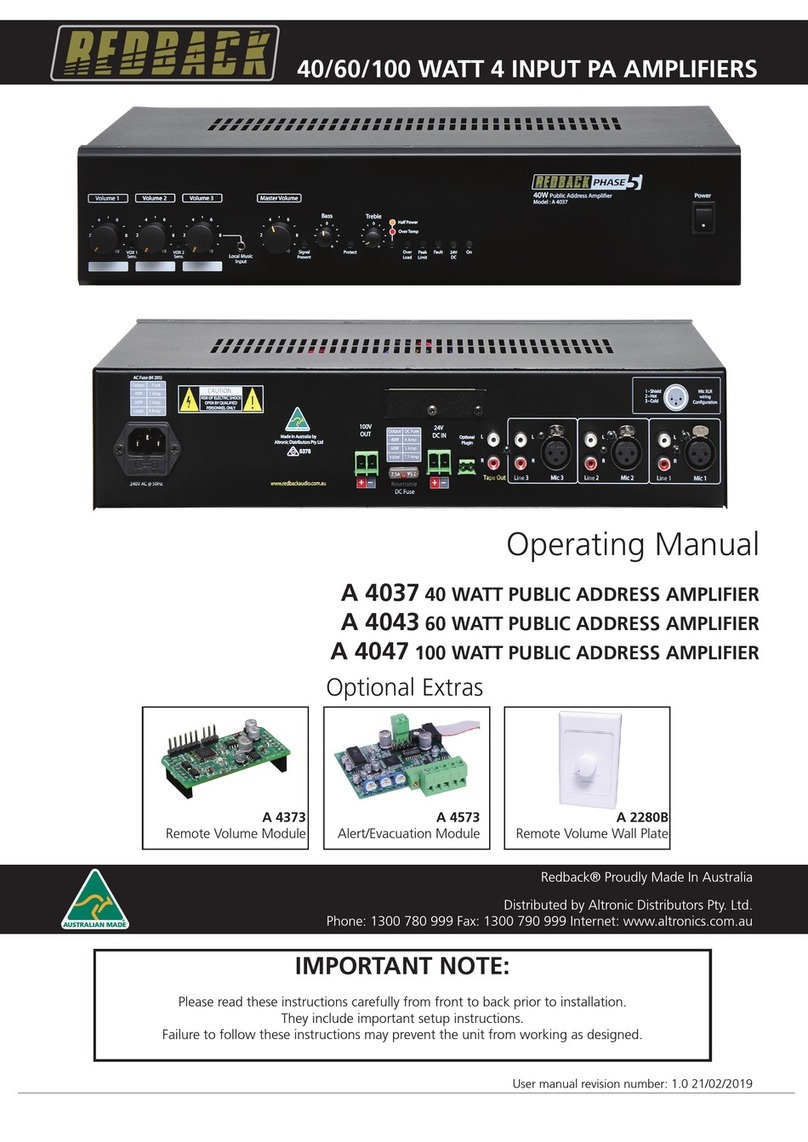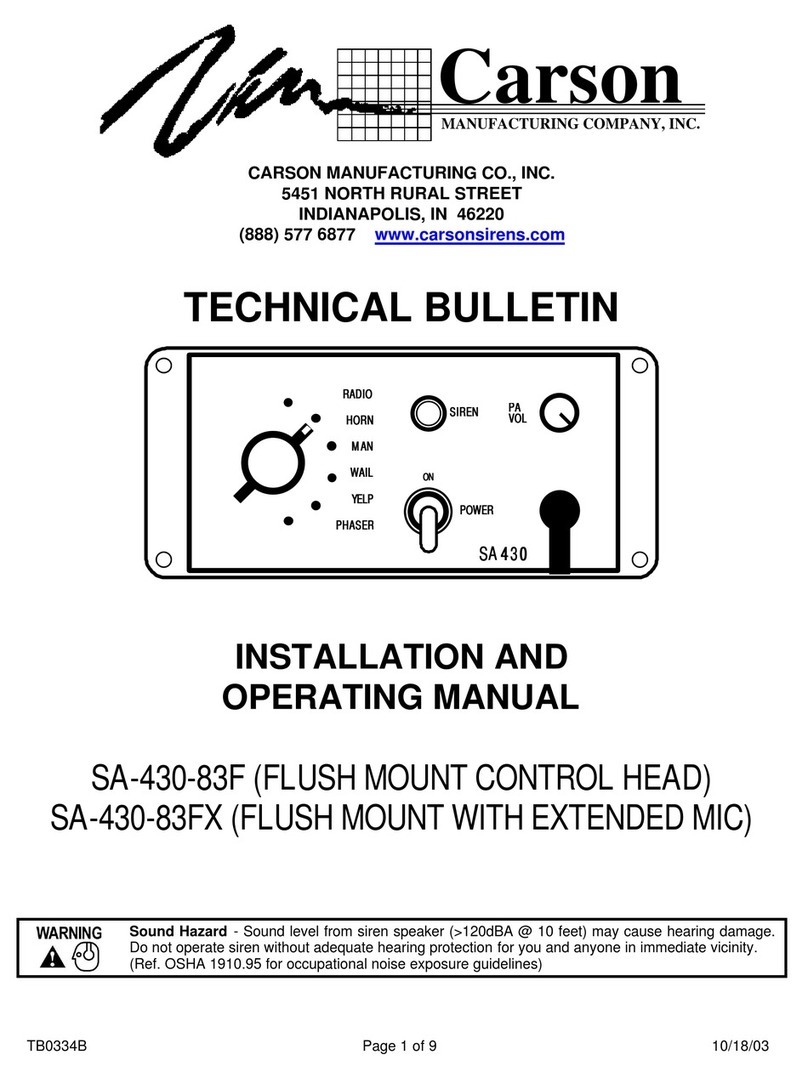
CXV225NA & CXV425NA User Manual v1.010
Protection
The ampliers include comprehensive protection circuitry
to prevent damage to loudspeakers, the output devices and
other components in the event of a fault condition.
Thermal Protection
The output device heatsink temperatures are monitored and
the protection circuitry activated if any should exceed 90°C.
The red front panel PROTECT LED for the appropriate
channel illuminates to indicate the fault condition.
DC Protection
Crowbar protection is provided to safeguard the
loudspeakers in the event of DC being present at the output
terminals.This is an emergency protection feature that
will only operate in the event of the amplier developing a
fault. Its action is liable to blow internal DC rail fuses.The
amplier must be serviced before any attempt is made to
use it further.
Short-circuit protection
VI limiting is implemented in the ampliers to protect the
output stages from excessive dissipation caused by abnormal
loads; for example, a short-circuit.
Switch-on protection
The protection circuitry is also activated immediately after
the amplier is switched on. This is to prevent any voltage
spikes due to start-up conditions from damaging the
loudspeakers.The protection circuitry automatically times
out after approx. 5 seconds.All PROTECT LEDs illuminate at
switch-on for the duration of the time-out period.
High Pass Filters
Most transformers tted to 70 V-line speakers exhibit
core saturation when fed with high-level signals at low
frequencies.Transformer saturation creates unpleasant
distortion and stresses the system.To counteract this, a
correctly congured high pass lter is an essential part of
any 70V-line system.The CXV225NA and CXV425NA have
variable frequency high pass lters in each channel, accessible
at the rear panel (see page 7).These should be adjusted to
reject low frequencies, to suit both the speakers and the
application.When adjusting, bear in mind that the higher
the frequency setting, the less likely it is that the system will
suffer from saturation problems.
The minimum (20 Hz) setting should only be used when
the system has some other form of lter or protection
from high-level low frequency signals (e.g., a dedicated
speaker processor) or when the speaker manufacturer
explicitly states that they will operate correctly at such low
frequencies.
For speech-only
Settings somewhere between 100 Hz (12 o’clock) and
200 Hz are appropriate. Start with the lter set to 100 Hz
and turn the control clockwise whilst listening to speech
through the system until you can hear a loss of bass in the
voice. Few voices contain any useful signal below 200 Hz,
so in many cases the lter can be set to 200 Hz without
any real loss of quality. Often a setting this high will actually
enhance the clarity of the speech, reduce microphone
handling noise and reduce breath blasts.
For music systems
The optimum lter setting will depend on the speakers
and their transformers. It should be recognised that many
70 V-line speakers have inferior LF performance compared to
low impedance speakers. If the manufacturer recommends
a minimum frequency of operation, set the lter to this.
Otherwise, settings between 70 Hz and 100 Hz should be
appropriate.
Test the system at full volume with a variety of music
containing high level, low bass notes and listen for any
distortion. If the transformers saturate, distortion will be
clearly audible. In this case, turn the control clockwise until
it disappears.
VCA Cards (optional)
Cloud VCA-5 modules must be tted to the CXV225NA
and CXV425NA ampliers if remote control of audio level
is required. One VCA-5 module is required for each channel,
and as many as necessary may be tted. The VCA modules
use the industry-standard That’s 2181 VCA device, which
provides very low distortion and up to 90 dB attenuation at
cut-off.
The VCA module can also be used to provide muting by
using an auxiliary relay connected to a re alarm control
panel. Please contact our technical department for further
details.
Installation
•With the power turned off and the mains cable
removed, remove the top panel.
•Refer to the pcb layout diagrams on page 13. Locate the
VCA connector for the rst channel being tted, and
remove the jumper joining one pair of pins.
•Unscrew the blanking plate from the rear panel.
















